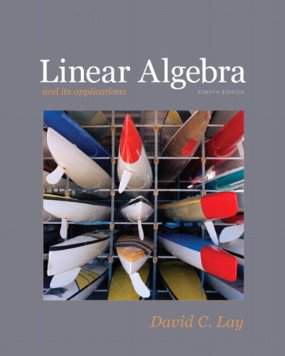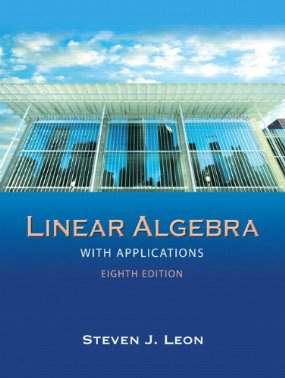Connecting...

This is a quick preview of the lesson. For full access, please Log In or Sign up.
For more information, please see full course syllabus of Linear Algebra
For more information, please see full course syllabus of Linear Algebra
Linear Algebra Rank of a Matrix, Part I
Lecture Description
The rank of a matrix is another identifying property of a matrix like determinants. Unlike determinants, the rank can be used to find the basis of a space. Here we’ll give you the definition of a matrix rank, and show you how the rank and space correlate, as well as give you some examples using the rank. In the next video, we’ll dive deeper into the idea of a matrix rank, and apply what you learn here to more complex situations involving the rank.
Bookmark & Share
Embed
Share this knowledge with your friends!
Copy & Paste this embed code into your website’s HTML
Please ensure that your website editor is in text mode when you paste the code.(In Wordpress, the mode button is on the top right corner.)
×
Since this lesson is not free, only the preview will appear on your website.
- - Allow users to view the embedded video in full-size.
Next Lecture
Previous Lecture










































 Answer Engine
Answer Engine




1 answer
Sun Oct 20, 2019 12:22 AM
Post by Joseph Liu on October 18, 2019
Hey Prof,
You mention a few times finding the basis of span S. Well a basis is a span already, so does that mean we're trying to find the span of the span of S?
0 answers
Post by Silvia Gonzalez on January 16, 2016
hi, thank you for the class, they are fascinating.
When you want to find a Basis for the Row Space among the vectors that are rows of the matrix, you form the augmented matrix for the homogeneous system. Why augment it if it is just adding a final column of zeros which stays a column of zeros through the whole process to obtain the RRE, till the end, and does not affect the rest of the columns, hence does not affect the final basis?
1 answer
Sat Nov 15, 2014 11:08 PM
Post by Imran Malik on November 14, 2014
For the homogeneous system we look at the columns which don't have a leading entry and those become the vectors of the basis, and the row vectors not containing all zeros are the vectors for our basis in example 1? is this correct? slightly confused. thanks
1 answer
Mon Apr 22, 2013 12:05 AM
Post by Daniel Navarro on April 21, 2013
Your passion is contagious, and it just makes studying for LA that much more fun - especially during finals.
Thanks!